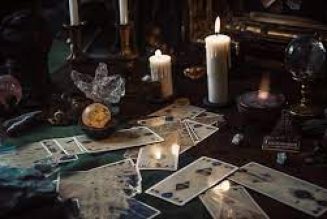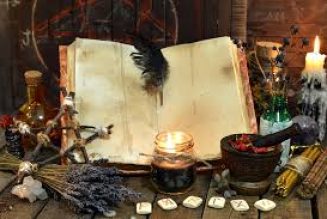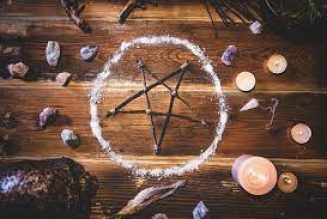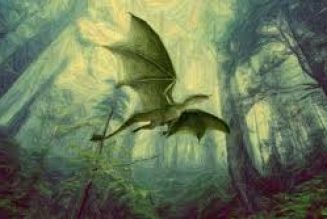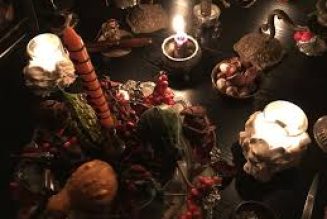It has been said by a thoughtful writer that the subject of witchcraft has hardly received that place which it deserves in the history of opinions. There has been, of course, a reason for this neglect—the fact that the belief in witchcraft is no longer existent among intelligent people and that its history, in consequence, seems to possess rather an antiquarian than a living interest. No one can tell the story of the witch trials of the sixteenth and seventeenth-century England without digging up a buried past, and the process of exhumation is not always pleasant. Yet the study of English witchcraft is more than an unsightly exposure of a forgotten superstition.
There were few aspects of sixteenth and seventeenth-century life that were not affected by the ugly belief. It is quite impossible to grasp the social conditions, it is impossible to understand the opinions, fears, and hopes of the men and women who lived in Elizabethan and Stuart
England, without some knowledge of the part, played in that age by witchcraft. It was a matter that concerned all classes from the royal household to the ignorant denizens of country villages. Privy councilors anxious about their sovereign and thrifty peasants worrying over their crops, clergymen alert to detect the Devil in their own parishes, medical quacks eager to profit by the fear of evil women, justices of the peace zealous to beat down the works of Satan—all classes, indeed—believed more or less sincerely in the dangerous powers of human creatures who had surrendered themselves to the Evil One.
Witchcraft, in a general and vague sense, was something very old in English history. In a more specific and limited sense, it is a comparatively modern phenomenon. This leads us to a definition of the term. It is a definition that can be given adequately only in a historical way. A group of closely related and somewhat ill-defined conceptions went far back.
Some of them, indeed, were to be found in the Old Testament, many of them in the Latin and Greek writers. The word witchcraft itself belonged to Anglo-Saxon days. As early as the seventh century Theodore of Tarsus imposed penances upon magicians and enchanters, and the laws, from Alfred on, abound with mentions of witchcraft. From these passages, the meaning of the word witch as used by early English may be fairly deduced. The word was the current English term for one who used spells and charms, who was assisted by evil spirits to accomplish certain ends. It will be seen that this is by no means the whole meaning of the term in later times. Nothing is yet said about the transformation of witches into other shapes, and there is no mention of a compact, implicit or otherwise, with the Devil; there is no allusion to the nocturnal meetings of the Devil’s worshippers and to the orgies that took place upon those occasions; there is no elaborate and systematic theological explanation of human relations with demons But these notions were to reach England soon enough. Already there were germinating in southern Europe ideas out of which the completer notions were to spring. As early as the close of the ninth century certain Byzantine traditions were being introduced into the West. There were legends of men who had made written compacts with the Devil, men whom he promised to assist in this world in return for their souls in the next. But, while such stories were current throughout the Middle Ages, the notion behind them does not seem to have been connected with the other features of what was to make up the idea of witchcraft until about the middle of the fourteenth century. It was about that time that the belief in the “Sabbat” or nocturnal assembly of the witches made its appearance.
The belief grew up that witches rode through the air to these meetings, that they renounced Christ and engaged in foul forms of homage to Satan. Lea tells us that towards the close of the century The University of Paris formulated the theory that a pact with Satan was
inherent in all magic, and judges began to connect this pact with the old belief in night riders through the air. The countless confessions that
resulted from the carefully framed questions of the judges served to develop and systematize the theory of the subject. The witch was much
more than a sorcerer. Sorcerers had been those who, through the aid of evil spirits, by the use of certain words or of representations of persons or things produced changes above the ordinary course of nature. “The witch,” says Lea, “has abandoned Christianity, has renounced her baptism, has worshipped Satan as her God, has surrendered herself to him, body and soul, and exists only to be his instrument in working the evil to her fellow-creatures which he cannot accomplish without a human agent.”
With the earlier period, which has been sketched merely by way of definition, this monograph cannot attempt to deal. It limits itself to a
narrative of the witch trials, and incidentally of opinion as to witchcraft, after there was definite legislation by Parliament. The statute of the fifth year of Elizabeth’s reign marks a point in the history of the judicial persecution at which an account may very naturally begin. The year 1558 This was the final and definite notion of a witch. It was the conception that controlled European opinion on the subject from the latter part of the fourteenth to the close of the seventeenth century. It was, as has been seen, an elaborate theological notion that had grown out of the comparatively simple and vague ideas to be found in the scriptural and classical writers.

